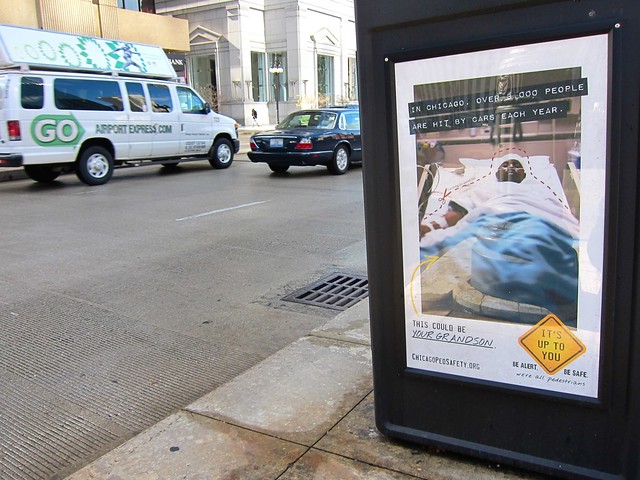[flickr]photo:8041108711[/flickr]
Englewood resident Denise King tries out the new refuge island at 63rd and Claremont.
[This piece also appeared in Checkerboard City, John’s weekly transportation column in Newcity magazine, which hits the streets in print on Thursdays.]
Running late as usual, I hop on my bicycle and sprint south from Logan Square, fortunately with a sweet tailwind at my back. I’m heading to the ribbon cutting for new Children’s Safety Zone traffic-calming and pedestrian-safety treatments at Claremont Academy Elementary School, 2300 West 64th Street in West Englewood.
The city has 1,500 of these safety zones, designated areas within one-eighth mile of schools and parks. The Chicago Department of Transportation (CDOT) is planning to install additional infrastructure at dangerous intersections within these sectors to discourage speeding and make crossing easier. Currently there are about 3,000 pedestrian crashes a year in the city, with about 800 involving kids (full data below). And in this era of rising obesity rates, the goal is also to encourage more children to walk to school and to play at their local park.
Continue reading Ride into the safety zone: new traffic calming and ped safety treatments
